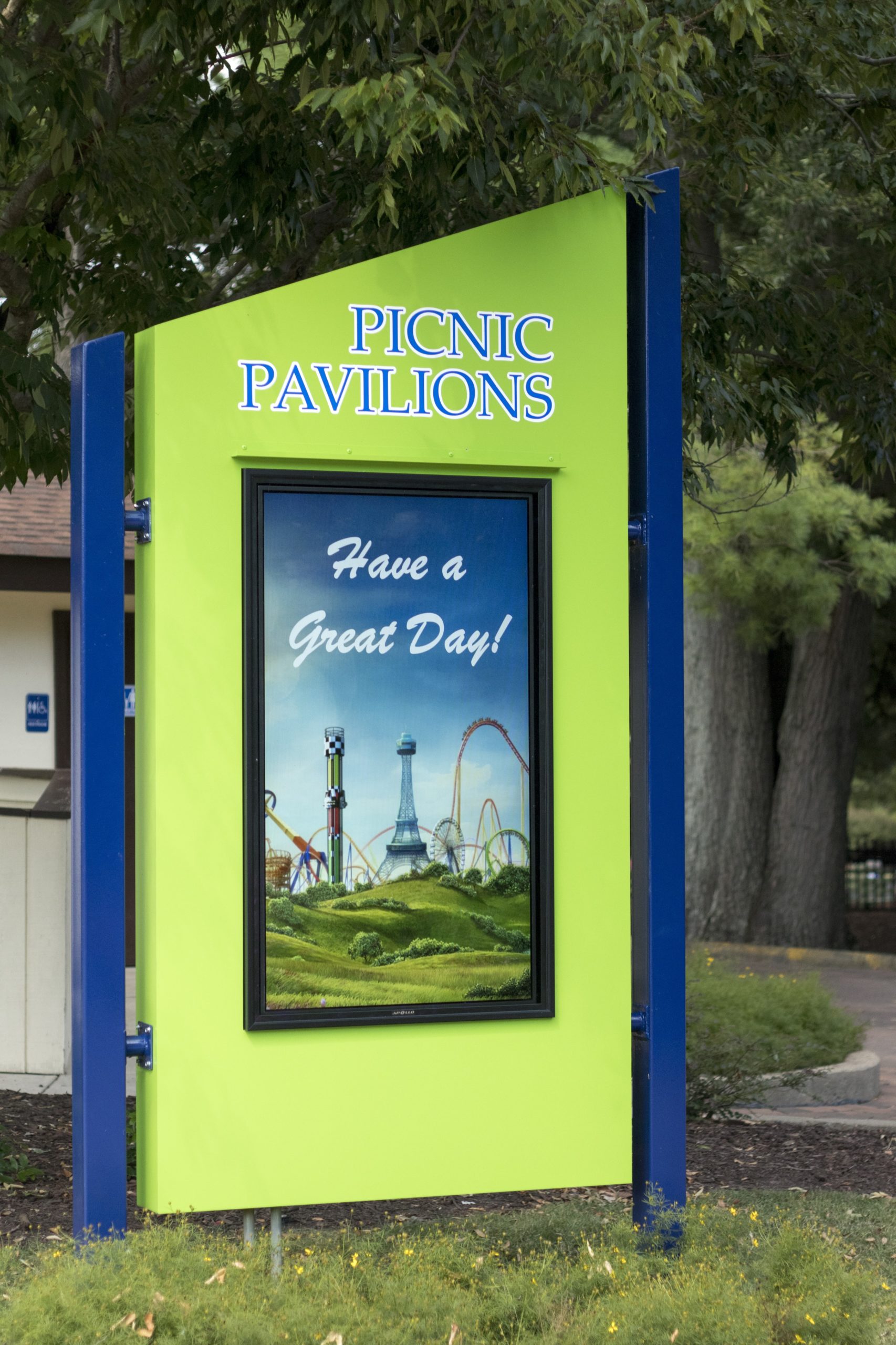The Basics of Outdoor Digital Signage
Just as digital signage can be used to communicate with people inside of a building, it can also be used to communicate with folks outside of a building. Outdoor digital signage can be located at drive-thru lanes, courtyards, bus stops, and outside hospitals, hotels, schools, offices, parks and retail for wayfinding, building directories, information sharing, advertising and more.
The considerations for outdoor digital signage are often unique from those for indoor signage. These special features often translate to hefty prices for outdoor sign implementations:
- Weatherproofing to protect the hardware from rain, snow, wind, temperature, humidity, and ice
- High-brightness screens for the content to be visible in sunlit conditions
- Screen protection to prevent vandalism and other screen damage
Because of the above considerations, in addition to rules of traditional digital signage, the design of an outdoor sign is going to be different and expensive.
Let’s look at each of these features and how you should evaluate them:
1. Hardware Rated for Outdoor Use
IP ratings i.e. Ingress Protection ratings, mean that there is a level of sealing protection that electrical enclosures have against dust/debris and moisture (solids and liquids).

Keep in mind that this protection does not cover temperature or security concerns.
To protect your hardware from all of the elements – dust/debris, moisture, temperature fluctuations and vandalism/other damage – you have two options:
- source your screens from commercial-display manufacturers, e.g. SunBright TV and Peerless-AV Xtreme, who offer stand-alone weatherproof displays
- or buy a sturdy enclosure that’s also aesthetically pleasing
Keep in mind that these stand-alone displays are more expensive than screens that require a protective enclosure.
For your enclosures, note that exterior finishes, including powder coating and Lexan laminated graphics, enable outdoor signs to maintain their original appearance over time, despite exposure to the elements.
2. Temperature Management
Screens and the media players hooked to them generate heat, in addition to weather elements. If the temperatures are too high, your screens and media players will be damaged. Freezing temperatures can also damage your hardware.
Outdoor enclosures offer air-cooling and heating that run automatically with temperature sensors. These features, help your outdoor signs to operate between sub-zero to 120+ temperatures.
Beware that air conditioning drips water which can cause problems with electrical components. Make sure that they are sealed to prevent condensation inside the glass. So, look for enclosures that use alternative air-cooling.
3. Screen Brightness
Outdoor digital signage competes with the sun. And unless you pay heed to screen brightness, you can bet the sun will win.
High-brightness displays are essential. The bright displays will ensure maximum visibility 24/7, a crucial factor for window displays and outdoor signs. If the sign is in a shaded area, a 700-nit brightness may work. If it’s in direct sunlight, you will need a minimum brightness level of 1,500 nits.

4. Security
Comprehensive security is essential for outdoor signs. This hardware is often off-site and unattended, so unsavory people can access the physical hardware.
For this reason, your signs should be designed to discourage and prevent tampering. Add security features such as:
- extra weld points
- compression locks
- tempered or laminated safety glass
- strategically placed stiffeners
- using galvanized steel to prevent impact from collisions
These protect the user, screens and components inside the enclosure.
While hardware is the main difference between the success of indoor vs outdoor signage, it’s not the only difference.
The audience for outdoor signs will be otherwise occupied—perhaps driving, walking, or chatting on their phones. This is in stark contrast to indoor signage where viewers are “captive” audiences, such as malls or hospital waiting rooms.
With outdoor deployments, it’s more important to create high-contrast, eye-catching design layouts that can earn the attention of otherwise distracted viewers. Pay attention to the colors you use, the size of your content layouts, and other digital signage design best practices.

Implementing Outdoor Signage
Now that you know the hardware requirements, the rest is relatively easy. You will need content management software and a digital signage player to download the content and display it on your screens.
In a 2019 Future Trends report, 64% of respondents agreed that increased customer engagement was a key benefit of their digital signage implementation.
While 76% of respondents said that their digital signage portfolios weren’t decreasing, of those that were, 11% cited hardware failure as their rationale for stopping.
This can be explained by improperly selecting hardware not suited and optimized for their applications. While software is the brains of digital signage, you also need to make sure that the body is healthy to execute instructions from the brain.
With proper pre-project planning and research, outdoor digital signage will yield an ROI.



